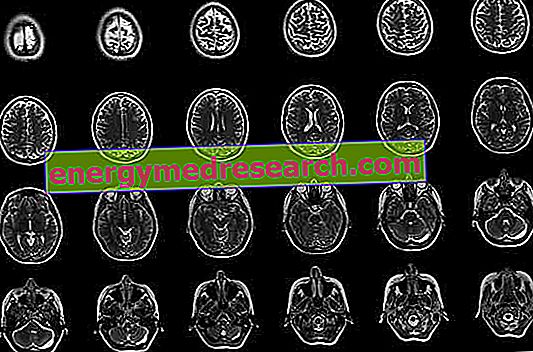Definition
Liver fibrosis is a pathological process that leads to excessive accumulation of connective tissue in the liver. This condition is established in the presence of a stimulus represented by chronic inflammatory lesions or other repeated damage to the organ. Over time, the "scar-like" tissue - produced in excess and / or degraded in a deficient manner - alters the architecture and limits the proper functioning of the liver.
In the initial stage, if the cause is reversible, liver fibrosis can regress. On the contrary, if it is not interrupted, the pathological process becomes permanent and can lead to cirrhosis and liver failure.
Fibrosis can be caused by a wide variety of factors. Most cases derive from:
- inflammation (chronic hepatitis);
- disorders that alter the blood flow of the liver (eg heart failure, Budd-Chiari syndrome and portal vein thrombosis)
- mechanical obstruction (eg presence of obstacles to biliary outflow and sclerosing cholangitis).
Fibrosis is also observed during hepatic viral infections (such as chronic hepatitis B or C), bacterial (eg, brucellosis), fungal and parasitic (eg echinococcosis).
This condition can also derive from inborn errors of metabolism and accumulation pathologies (eg lipid abnormalities in Gaucher disease, iron overload syndromes and Wilson's disease).
Liver fibrosis can also be caused by the intense and prolonged use of some drugs (eg methotrexate, isoniazid, oxyphenisatin, methyldopa, chlorpromazine, tolbutamide and amiodarone) and by exposure to toxic agents (eg alcohol). Finally, there is a congenital form.

Most common symptoms and signs *
- Anemia
- Anorexia
- Ascites
- Asthenia
- Cachexia
- Dyspnoea
- Bruising
- Gastrointestinal hemorrhage
- Hepatitis
- Hepatomegaly
- Erythema
- Ease of bleeding and bruising
- Swollen legs
- Abdominal swelling
- Hydrops Fetal
- Portal hypertension
- Jaundice
- Nausea
- Pallor
- Weight loss
- petechiae
- thrombocytopenia
- itch
- Water retention
- Blood in the stool
- Drowsiness
- splenomegaly
- steatorrhea
Further indications
Liver fibrosis is often asymptomatic, but can lead to portal hypertension (scar tissue alters blood flow through the liver) or cirrhosis (fibrous scars cause the breakdown of normal architecture and consequent organ dysfunction). Therefore, clinical signs may develop second to the primary disorder causing fibrosis or portal hypertension.
In the field of hepatic fibrosis, fatigue, anorexia, weight loss, nausea, abdominal discomfort, itching, swelling of the legs, frequent bleeding and bruising, jaundice (yellowing of the skin and sclera of the eyes) and peripheral neuropathy can be observed.
Portal hypertension can lead to splenomegaly, bleeding from esophageal and gastric varices, ascites or porto-systemic encephalopathy.
Finally, when the damage to the organ is extended and the liver no longer works properly, cirrhosis and liver failure occur.
The diagnosis is based on liver biopsy, an investigation that allows us to ascertain the presence of liver fibrosis and assess the progression of the disease.
When possible, treatment aims to correct the cause of liver damage. Such interventions may include abstinence from alcohol, bile duct decompression and removal of heavy metals, such as iron in hemochromatosis or copper in Wilson disease.
Usually, treatments aimed at reversing fibrosis are toxic for long-term use (eg corticosteroids and penicillamine) or have not shown their efficacy (as in the case of colchicine). Currently, other antifibrotic treatments are being studied.



